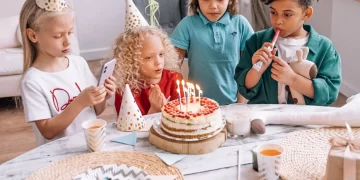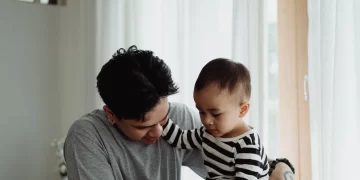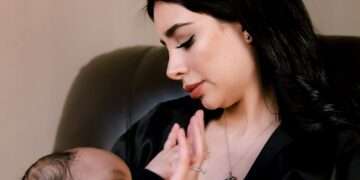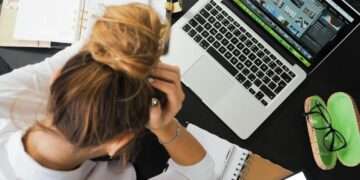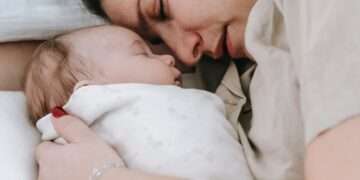
Maintaining and repairing toys can help extend their lifespan, ensuring that they provide enjoyment for a more extended period. A baby toy is an object or plaything specifically designed for infants and young children to engage with, explore, and enjoy. These are crafted with the developmental needs and safety of babies in mind. Baby toys play a crucial role in promoting various aspects of a child’s growth, including sensory development, motor skills, cognitive abilities, and social interactions.
It’s important for parents and caregivers to choose toys that are age-appropriate and free from small parts that could pose a choking hazard. Additionally, ensuring that toys are made from non-toxic materials and regularly checking for wear and tear helps maintain a safe play environment for infants. Babies learn and develop through play, making the selection of suitable toys an integral part of early childhood development. Here are some general tips on how to maintain and repair toys:
Maintain And Repair Toys Tips:
- Read the Instructions:
- Always follow the manufacturer’s instructions for care and maintenance. This information is usually provided on a tag or in the toy’s packaging.
- Regular Cleaning:
- Clean toys regularly to remove dirt, dust, and germs. The cleaning method depends on the type of toy. Some can be wiped with a damp cloth, while others may be washable.
- Battery Care:
- For toys that use batteries, replace them as needed and remove batteries if the toy won’t be used for an extended period to prevent corrosion.
- Storage:
- Store toys properly in a clean and dry environment. Avoid exposing them to extreme temperatures, humidity, or direct sunlight, as these conditions can damage materials.
- Check for Wear and Tear:
- Inspect toys for signs of wear and tear, such as loose parts, frayed edges, or broken components. Attend to these issues promptly to prevent further damage.
- Avoid Rough Play:
- Teach children to play with their toys gently to minimize the risk of breakage. Some toys may have weight or age restrictions, so adhere to these guidelines.
- Keep Small Parts Secure:
- For toys with small parts, make sure they are securely attached. Regularly check for loose or missing pieces, and repair or replace them as necessary.
- Inspect Stuffed Animals:
- If toys are stuffed animals or contain stuffing, check for any rips or tears. Repair these promptly to prevent stuffing from coming out.
Repair Tips:
- Basic Sewing for Fabric Toys:
- For fabric toys, learn basic sewing skills to mend small tears or seams that have come apart.
- Gluing for Plastic Toys:
- Use strong, child-safe glue for repairing plastic toys. Follow the manufacturer’s instructions for the specific type of plastic.
- Replacement Parts:
- Contact the manufacturer to inquire about replacement parts if a specific piece is missing or broken.
- Duct Tape for Quick Fixes:
- For temporary fixes on certain toys, duct tape can be useful. However, this is not a long-term solution and proper repairs should be made when possible.
- Wooden Toy Maintenance:
- Sand down any rough edges on wooden toys to prevent splinters, and reapply non-toxic finishes if needed.
- Professional Repairs:
- If a toy is particularly valuable or has sentimental value, consider professional repairs. Some specialized toy repair services may be available.
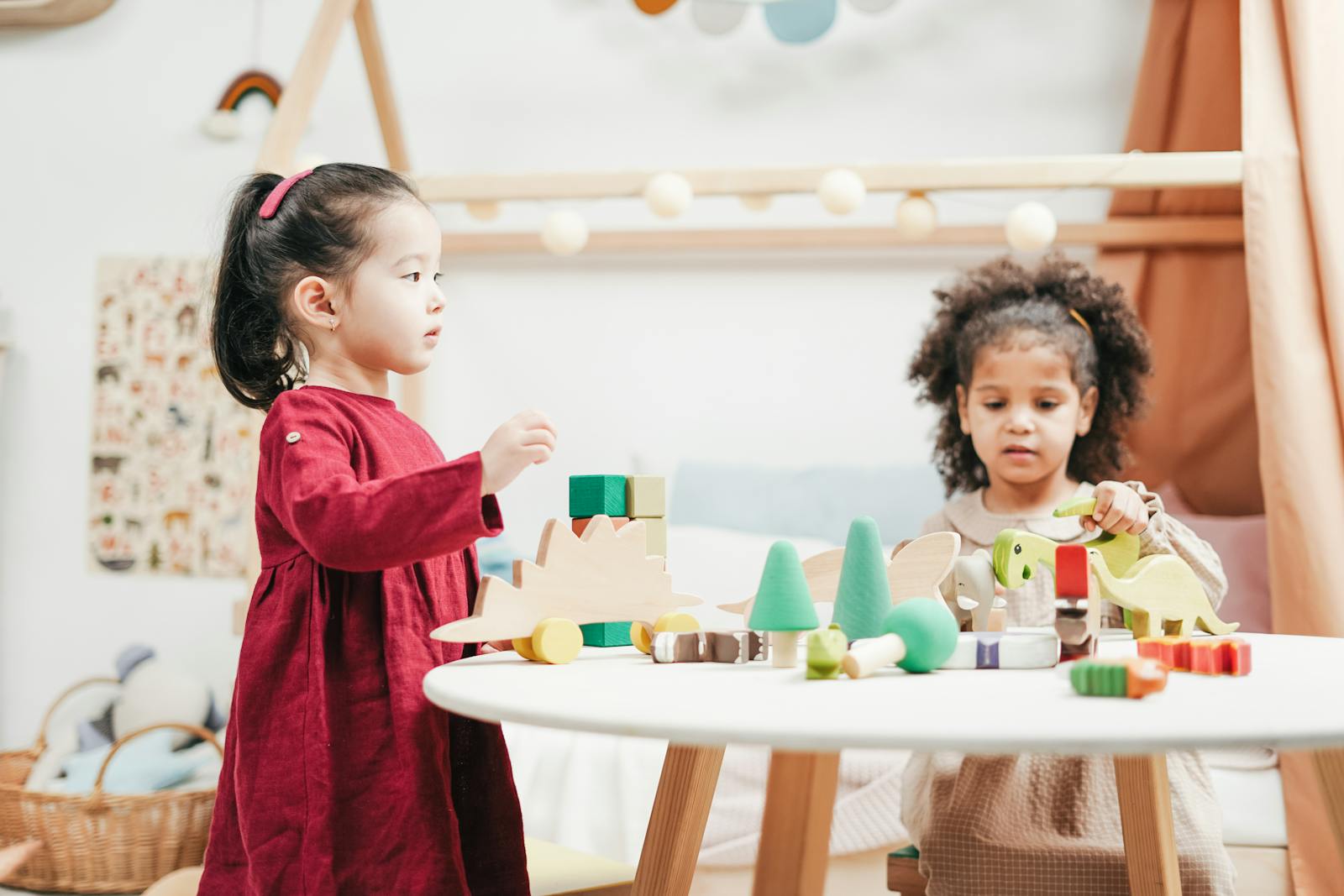
What You Need to Clean Baby Toys
You likely own a number of cleaning products that are safe to use on plastic baby toys, such as Clorox or Lysol wipes, 3% hydrogen peroxide solution, and chlorine bleach. You can also check the baby care aisle of any grocery or drugstore, as you’re bound to spot some bottled cleaners specifically geared toward sanitizing toys.
“Toys are likely going into your babe’s mouth, so you’ll want to be sure to consider using a safe chemical for sanitation such as vinegar, alcohol, or peroxide,” says Brandi Winch, owner of Homemaid Cleaning Service and Homemaid Home Organization.
If you’ll also be washing some plush lovelies or other stuffed animals, make sure to stock up on detergent and dryer sheets or balls that are safe for baby skin. Whatever you use to wash your little one’s spit-up-on clothing is bound to do the trick.
Put Stuffed Animals In The Washing Machine
Most stuffed animals can be easily washed in the washing machine. Simply set the machine to a gentle cycle with cool or warm water, it is using a safe and baby-friendly laundry detergent.
To help protect your baby’s furry friend during the wash cycle, consider tying it inside a pillowcase or placing it inside a lingerie bag. After it’s clean, set it in the sun for a fresh dry or put it in the dryer on low. That being said, if you still have the label for the stuffed animal, check to make sure it can be laundered. Some stuffed animals are fragile, and you don’t want your little one’s favorite lovey to be ruined after the wash!
Step-by-Step Guide to Cleaning Plush Toys
When cleaning a baby’s lovey or other plush toys, it’s most effective to run them through the washer and dryer. To do so, place the stuffed animals in a linen or mesh bag, particularly if they are small or have any clothing on them that might get lost or damaged in the wash.
“You can add vinegar to the wash cycle for sanitation purposes instead of bleach. Bleach is likely to discolor those beloved stuffies, and no one wants that,” says Winch. Run the washer on the delicate cycle, then follow up with a nice fluffing in the dryer—also set to delicate.
“Plush toys can get pretty gross pretty fast,” says Winch. “Most people underestimate the simple power of just running those bad boys through the washer and dryer! It’s so nice to have a freshly washed stuffy every now and again.”
Step-by-Step Guide to Cleaning Plastic Toys
Winch recommends submerging the toys in a bath of water along with the cleaning product so they can soak, or spraying them down and placing them on a clean surface to marinate for two to three minutes. “Make sure the surface of the toy is soaked for the duration of the kill time needed for sanitizing, typically a couple of minutes,” Winch says.1 She also advises that you refrain from using a disinfecting wipe, which likely won’t keep the surface wet enough to properly kill those pesky germs.
Allow the toys to air dry with the cleaning product still on them. Then, rinse these baby plastic toys in warm water to rid them of any chemicals. Finally, allow the toys to air dry once more rather than wipe them down with a towel.
Step-by-Step Guide to Cleaning Bath Toys
Bath toys are often plastic, so you can use similar methods as with other plastic toys. You can soak them in a tub of water with a cleaning product, or spray them down with a cleaning product and let them marinate for two to three minutes. Disinfecting wipes may seem like an easy solution, but they often have a hard time getting in all the nooks and crannies toys have.
Bath toys are notorious for getting gross quickly, as they’re constantly exposed to water. This can quickly lead to mold, especially in areas that may fill with water (like those pesky holes on the bottom of hollow toys). To combat this, make sure you fill those areas with your cleaning solution and allow it to soak. Once the soak is done, be sure to squeeze out all the product before rinsing.
As Wise suggests, after your bath toys are good and soaked, you should allow them to dry with cleaning products still on them. Then, rinse in warm water (including rinsing inside any hollow areas!) and allow to air dry once more.
What To Consider When Cleaning Baby Toys
For starters, do not place anything in the washing machine that includes a battery pack. The beloved dancing Elmo that once uttered adorable phrases will no longer have that talent if it goes through the wash.
Pay special attention to bath toys, which often have holes in the bottom. It’s important to squeeze all water out after each use so they have time to dry completely before taking another dunk in the tub. Otherwise, these toys can become a hotbed for bacteria.
“Prevention is going to be a key factor in bath toy maintenance,” says Winch. “First, make sure your baby bath toys are all or primarily impermeable. The Cloth bath toys or bath toys with holes in them require a lot more care. Second, invest in a mesh bag that hangs and will allow the toys to drain and be exposed to air between uses. Third, make sure to give the toys a quick rinse after use before placing them in their mesh bag.”
How Often To Clean Baby Toys
Cleaning your baby’s toys is probably not something you want to add to your long to-do list. But once you get the hang of it, it doesn’t have to take too much time or effort. And getting rid of nasty germs will be well worth it!
For the baby toys, your little one loves to play with every day, give them a simple cleaning once per week. Even if you don’t clean your toys that frequently, remember to give them a special, thorough cleaning after a playdate at your house or after one of your children has been sick.
In addition to cleaning toys regularly, don’t underestimate the power of good hand-washing to reduce the spread of bacteria and viruses. Wash your hands frequently, and keep your little one’s hands as clean as you can with soap and water!
If you don’t have access to water while you’re on the go with your baby, clean their hands (and the rest of their body if necessary!) with micellar water, like Mustela’s No Rinse Cleansing Water. Simply apply the cleanser to their skin with a soft cloth or cotton ball and get right back to your adventure — no need to rinse with water!
The best way to repair a toy depends on the type of toy and the nature of the damage. Here are some general tips for common toy repairs:
Basic Toy’s Repair:
- Identify the Damage:
- Examine the toy to identify the specific areas that need repair. Look for broken parts, loose seams, missing pieces, or other issues.
- Gather Materials:
- Depending on the type of repair needed, gather the necessary materials. This could include child-safe glue, fabric patches, replacement parts, or basic tools.
- Follow Manufacturer Instructions:
- If the toy came with instructions or a care guide, consult it for information on how to properly repair the item. This is especially important for toys with electronic components or specific care requirements.
- Use Child-Safe Materials:
- Ensure that any materials you use for repair are safe for children. This includes glues, paints, and fabrics. Look for non-toxic and child-friendly options.
Specific Toy Repair:
- Stuffed Animals:
- For tears in the fabric, use a needle and strong thread to sew up the hole. If there’s stuffing coming out, add more stuffing or use a fabric patch to cover the hole.
- Plastic Toys:
- Use strong, child-safe glue to mend broken plastic parts. Make sure the glue is appropriate for the type of plastic used in the toy. Follow the glue manufacturer’s instructions.
- Wooden Toys:
- For small chips or splinters, sand the area gently to smooth the surface. If a part is broken, use wood glue to bond the pieces together. Clamp the pieces until the glue dries.
- Soft Books:
- If pages are coming apart, use fabric glue or sew them back together. For tears in the fabric, sew the edges to prevent further unraveling.
- Battery Replacement:
- For toys that run on batteries, replace them according to the manufacturer’s instructions. Be sure to use the correct type of batteries and dispose of old batteries safely.
- Squeaky Toys:
- If a squeaky toy has lost its squeak, check for a small puncture in the squeaker. If found, you can often replace the squeaker or seal the hole with child-safe glue.
- Doll Clothing:
- If a doll’s clothing is torn, sew it up using a needle and thread. Be gentle to avoid damaging the fabric further.
- Remote-Controlled Toys:
- If the toy isn’t working, check the batteries, connections, and switches. Consult the user manual for troubleshooting tips.
Professional Repairs:
If a toy is valuable, has sentimental value, or requires a more intricate repair, consider professional help. Some specialized toy repair services can mend intricate or delicate toys, ensuring they are restored safely.
Always prioritize safety when repairing toys, and if in doubt, consult the manufacturer or seek professional assistance. Additionally, be aware that not all toys are easily repairable, and some may need to be replaced if the damage is extensive.
FAQ:
How do you take care of baby toys?
Use a cloth or toothbrush to clean any cracks or small spaces, then use fresh water to rinse the soapy water off, or wipe the toy with a cloth soaked in plain water. To disinfect the baby toys after they’ve been cleaned with soap, wipe or spray them with a one-to-one ratio mixture of rubbing alcohol and water.
How do you make toys safe for babies?
Avoid toys made from thin plastic that can break easily. Also, avoid giving toys with metal parts to toddlers and babies. Small toys and toys with small parts. To prevent choking in kids 3 or younger, make sure that toys and parts cannot fit inside an empty toilet paper tube or a choke tube.
What is the best glue to repair plastic toys?
Loctite Super Glue All Plastics even works on hard-to-bond plastics such as Polyethylene, delivering lightning-fast strength and precision. The Super Glue All Plastics rapid dual-action adhesive system has been designed to bond in seconds.
How do you clean baby toys without chemicals?
Simply combine equal parts vinegar and water or mix water with one tablespoon of baking soda to create a cleaning solution. Place solid plastic toys in the mixture, and let them soak before rinsing off and drying. For wooden or electronic toys, dampen a towel with the mixture and wipe down the toy’s surface.
Baby toys are the props and objects that help infants advance developmentally (while also providing some entertainment!). Some baby toys can help bolster fine motor skills while others assist with hand-eye coordination. Though the toys may look pretty basic, they are part of your baby’s first educational building blocks. They help teach cause and effect (such as when a baby presses a button and as a result, the toy makes noise) as well as engage in sensory exploration.
Remember that safety is a top priority when repairing toys. Use child-safe materials and methods, and always consider the age appropriateness of the repaired toy. If in doubt, consult the manufacturer or seek professional assistance.
